Samsung OLED 48 S90D or S94D is the smallest model in this series and we had the opportunity to check out what it can do. At first glance, it’s clear that it handles details in dark scenes excellently, as expected from an OLED. It’s worth mentioning that the 48-inch version differs from the larger models. The brightness is slightly lower, and the panel has a satin finish instead of a glossy one. During the day, this may affect image perception. However, regardless of the variant, OLED always makes an impression. The black depth is incredible and the contrast makes even the most demanding scenes look cinematic. When it comes to high-quality materials, this TV literally shines – bright elements in dark frames literally jump off the screen. The factory colour settings could be better, but after calibration, the TV reveals its full potential. While watching from different spots in the room, we noticed that the wide viewing angles work well – the image remains sharp and full of details, even when viewed from the side. The Tizen system proved to be user-friendly – apps like Netflix and Prime Video were at our fingertips. A few less popular apps are missing, which could be a downside, but it wasn’t an issue for us. The interface itself operated smoothly, with no stutters. When watching sports and dynamic films, the TV showed what it’s capable of. The 144 Hz panel eliminates motion blur, and fast actions are displayed smoothly and without interruptions. What is gaming on this TV like? It’s simply pure enjoyment. Low input lag and support for 144 Hz made every gaming session responsive and fluid, whether we were playing dynamic FPS titles or more laid-back strategy games. Samsung OLED 48' S90D/S94D is a great choice for those looking for a smaller TV with excellent picture quality and extra features for gamers. It’s not without compromises, but in everyday use, it performs really well. For us, it’s a compact device that proves that size doesn’t always matter.
- Matching (Score)
- Our verdict
- TV appearance
- Where to buy
- Contrast and black detail
- HDR effect quality
- Factory color reproduction
- Color reproduction after calibration
- Smoothness of tonal transitions
- Image scaling and smoothness of tonal transitions
- Blur and motion smoothness
- Console compatibility and gaming features
- Input lag
- Compatibility with PC
- Viewing angles
- TV efficiency during daytime
- Details about the matrix
- TV features
- Apps
- Playing files from USB
- Sound
Samsung S90D / S94D 48" (WRGB OLED) vs PHILPS PUS9060
Direct compare
S90D / S94D
The One 2025 / PUS9060 / PUS9000
Available screen sizes: 48”

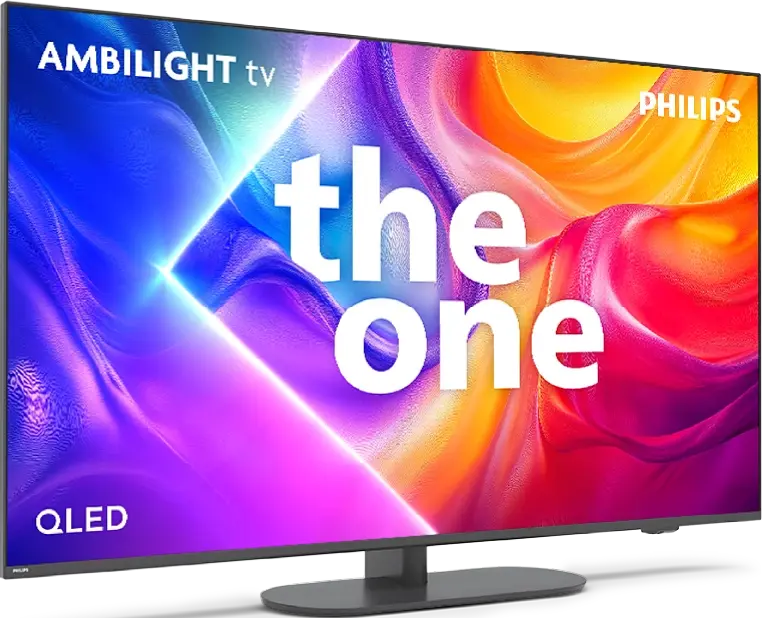
Panel type: WRGB OLED
Resolution: 3840x2160
System: Tizen
Model year: 2024
Complete the survey to find out the result

Panel type: LCD VA
Resolution: 3840x2160
System: Titan OS
Model year: 2025
Complete the survey to find out the result

Overall rating
7.9
6.8
Movies and series in UHD quality
7.9
6.7
Classic TV, YouTube
8.6
6.5
Sports broadcasts (TV and apps)
8.4
6.6
Gaming on console
9.4
8.4
TV as a computer monitor
8.6
8.8
Watching in bright light
5.4
6.0
Utility functions
7.7
6.4
Apps
8.3
6.2
Sound quality
6.8
6.6
Complete the survey to find out what fits your preferences
Advantages
Perfect black
Great for 4K HDR content
Excellent for gamers - 144hz, HDMI 2.1, low input lag.
Advanced and smooth Tizen system
Multifunctional solar remote
VA panel with very good native contrast
Ambilight TV system that enhances perceived contrast
Support for dynamic HDR formats: Dolby Vision and HDR10+
Great for gamers: Supports 4K 120/144 Hz, VRR, ALLM, HGiG, G-Sync Compatible
Low input lag
Very good compatibility with PC
Supports multiple audio formats - Dolby Atmos and DTS
Backlit remote with numeric keypad
Disadvantages
Worse brightness than larger counterparts
Missing Dolby Vision and DTS:X
The Titan OS operating system can be underdeveloped
Limited number of applications
Average viewing angles
Lack of TV functions (USB recording, PIP, Audio only mode)
Infrared remote (must aim at the screen)
Our verdict
Philips PUS9000 is proof that the manufacturer not only keeps a finger on the pulse but also carefully listens to its users. In the latest version of this popular series, there is a clear progression – especially in comparison to the previous generation that we had the opportunity to test. The use of a VA panel has brought noticeable improvement in blacks, which finally presents itself at a decent level. Brightness reaching 500 nits does not disappoint even in sunny rooms, and support for a wide range of HDR formats – including Dolby Vision and HDR10+ – completes the image of a well-prepared piece of equipment. Additionally, the support for spatial sound technologies like Dolby Atmos and DTS only enhances the positive impression, especially since the presence of all the aforementioned formats is not a given even in the most expensive models from 2025. But what really sets this model apart from the competition is the Ambilight system. The multicoloured backlighting not only makes a visual impression – in a darkened room, it can improve the perceived contrast and completely transform the viewing experience of a movie or series. The gaming mode also deserves recognition. 144 Hz, low input lag, variable refresh rate, G-Sync compatibility, and Game Bar functionality – everything you could expect from equipment designed with consoles and PCs in mind. Unfortunately, not everything works perfectly. The Titan OS system, while operating relatively smoothly, still suffers from shortcomings – many popular apps are missing, minor bugs occur, and the overall experience can be somewhat clunky in daily use. Additionally, the remote, despite its modern appearance, still uses infrared and requires pointing at the TV. Such a shame.
So, who is the PUS9060 for? For those who want to immerse themselves in an evening screening with impressive Ambilight, play on consoles, and stream content from external devices. In this scenario, “The One” could indeed turn out to be “the one and only” – especially given that its price is not off-putting on release day.
TV appearance







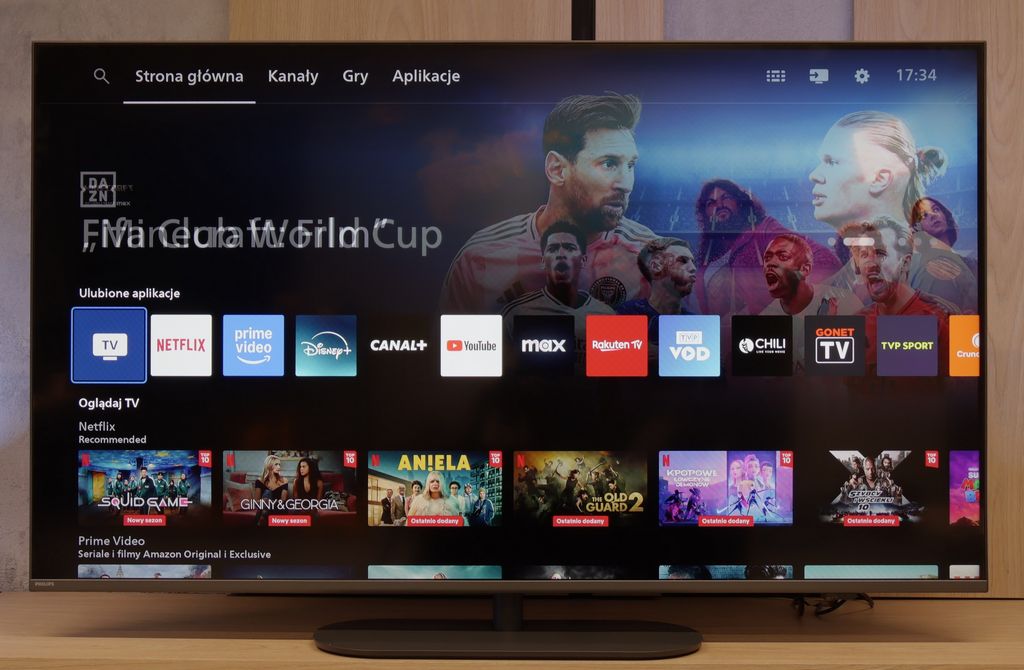
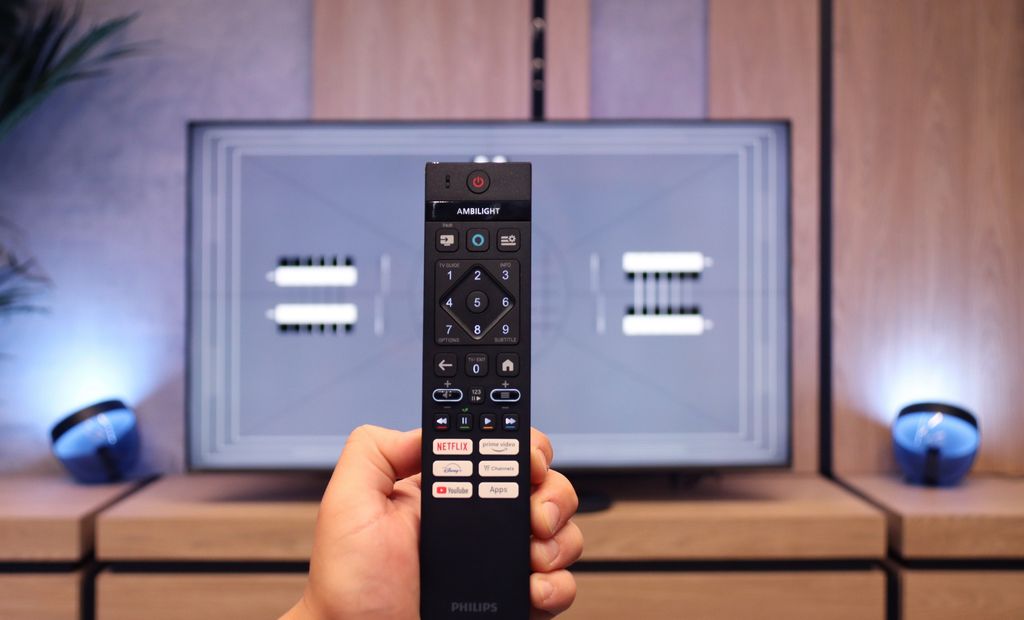

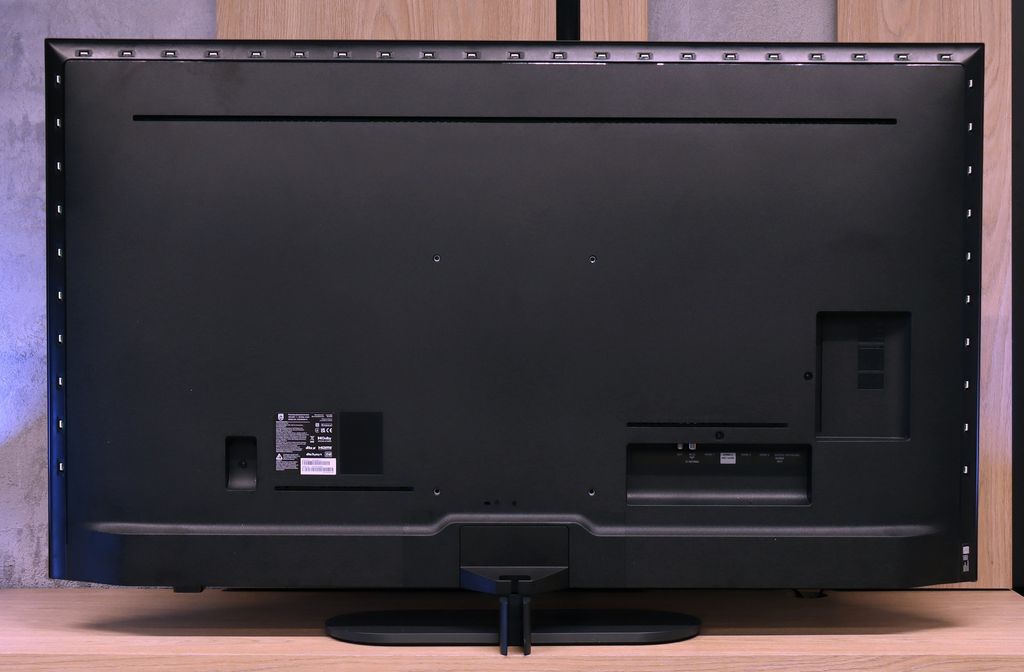
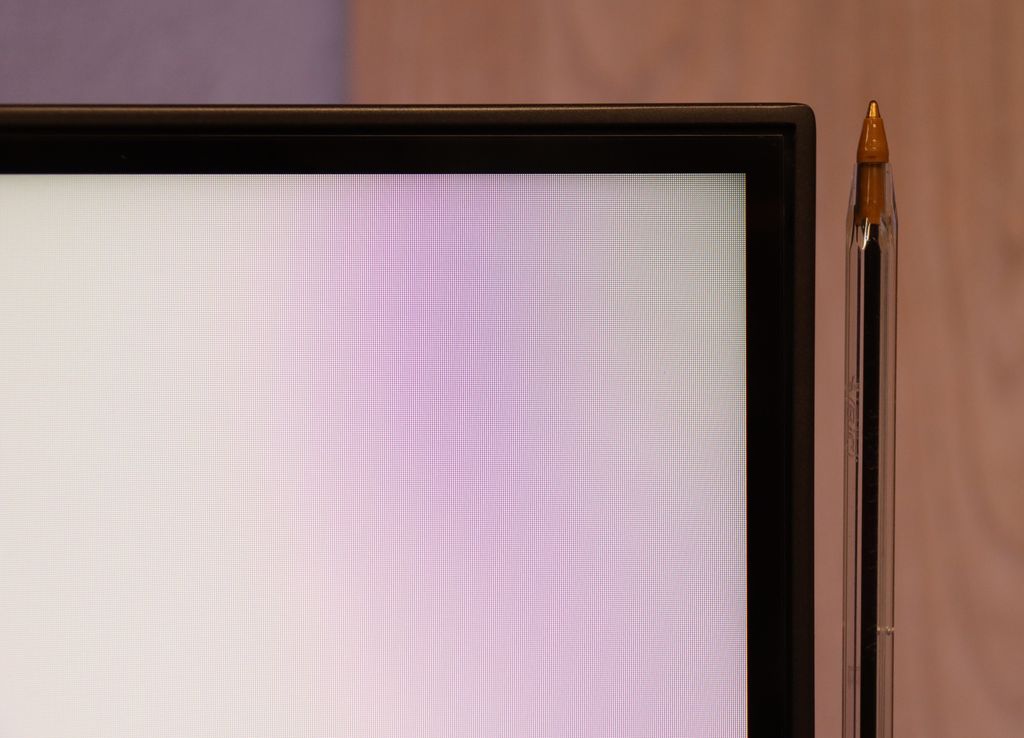
Contrast and black detail
10/10
6.2/10
Local dimming function: No
Contrast:

Result
∞:1

Result
∞:1

Result
∞:1

Result
∞:1

Result
∞:1

Result
6,000:1

Result
6,750:1

Result
7,300:1

Result
6,000:1

Result
6,800:1
Halo effect and black detail visibility:

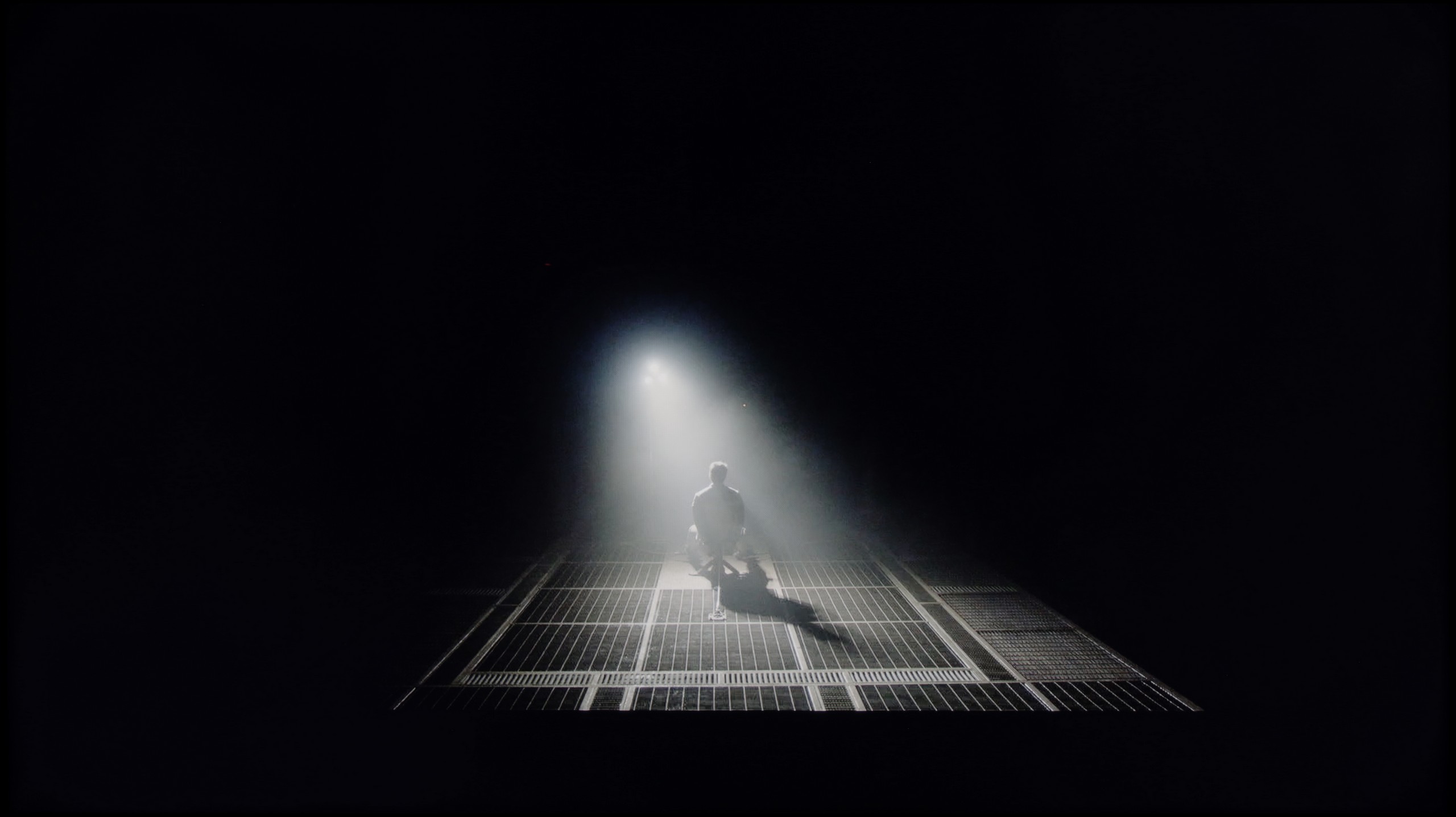
Samsung OLED 48 S90D stands out thanks to the use of an OLED panel, which provides an extremely high contrast, one of its key advantages. OLED technology allows each pixel to emit light independently, resulting in perfectly deep blacks and excellent visibility of details even in the darkest scenes. Unlike traditional LCD screens with backlighting, where black can appear washed out and greyish due to uneven backlighting, OLED ensures that pixels are completely turned off in areas where black should appear. This achieves an impressive level of contrast, making images more vibrant and realistic. An example can be seen in a scene from the film "Oblivion," where the S90D television superbly captures the intense light of the lamp, highlighting details in the bright areas of the image. Meanwhile, in "Sicario 2," the OLED panel accurately reproduces the helicopter lights against a dark background.
PUS9060 is a television that in this version is equipped with a VA panel – and this is immediately visible in the contrast tests. In the tested screens, the television achieved really good results, at around 6500:1. Such a result speaks for itself, indicating that the television has really decent black levels. Unfortunately, PUS9060 is not equipped with local dimming technology, and as a result – the blacks in dark conditions can appear to resemble a shade of navy. Fortunately, the The One series is known for the famous Ambilight system, which significantly enhances perceived contrast, and consequently – "tricks" our eyes into seeing better blacks. It seems simple, but it is very useful. Therefore, we recommend using this television in the evening with this system turned on. It doesn’t necessarily have to be multicoloured, tracking the image – it can simply be white.
HDR effect quality
6.2/10
5.7/10
Luminance measurements in HDR:

Result
788 nit

Result
807 nit

Result
851 nit

Result
838 nit

Result
372 nit

Result
507 nit

Result
430 nit

Result
542 nit

Result
551 nit

Result
545 nit
Scene from the movie “Pan” (about 2800 nits)


Scene from the movie “Billy Lynn” (about 1100 nits)


Static HDR10


Dynamic: HDR10+
Dynamic: Dolby Vision


HDR luminance chart:
PHILPS PUS9060
Luminancja HDR
Luminance of RGB colors
Samsung S90D / S94D 48" (WRGB OLED)
Luminancja HDR
Luminance of RGB colors
In the tested movie scenes, the Samsung OLED 48 S90D television achieves impressive brightness results, exceeding 800 nits in the first four shots, which can be considered a very good outcome. In the case of the last shot, where a full-screen burst of sunlight is visible, the brightness drops to around 400 nits but still remains at an acceptable level. However, it is worth noting that this model in larger sizes offers higher values, exceeding the "barrier" of 1000 nits. Additionally, speaking of the DCI-P3 colour space coverage value of 97% is an excellent result, which guarantees extremely rich and realistic colour reproduction, further enhancing the picture quality. However, once again it should be remembered that the panel in the 65' variant equipped with a QD-OLED panel will be even better in this aspect. For those hesitating about the size of the S90D model, it is worth noting that larger versions of this television offer a better HDR effect, and consequently, a higher score in our tests.
The One is bright enough to enjoy films recorded in HDR format. The average brightness of this model is around 500 nits, so we can easily expect a pleasant viewing experience with films from streaming platforms. Of course—there's always room for improvement, because when it comes to brightness, you can never have too much for this type of content. Unfortunately, a disappointing surprise may be the coverage of the DCI-P3 colour gamut that the PUS9060 offers. Although the manufacturer boasts the use of a QLED filter here (it’s actually PFS LED), it's hard to speak of any positive effects from its operation. 85% coverage of the DCI-P3 gamut is certainly not a level to brag about in 2025—especially in a television marketed as QLED.
Factory color reproduction
7/10
5.5/10


Factory Mode
After calibration


Factory Mode
After calibration
The S90D Samsung TV has been tested in Filmmaker mode, which offers good colour reproduction, although with some imperfections that may be noticeable to more demanding users. This mode may seem a bit too warm, and users who switched from Standard mode may experience a slight shock. It's worth considering that this state of affairs is caused by poor settings, such as white balance, rather than the Filmmaker mode itself. Both in SDR and HDR content, the device exhibits drops in blue, causing colours to appear warmer than they should. In practice, this means that some shades, like sky blue or skin tones, may seem less natural and take on a pinkish or yellowish tint. The Colour Checker test confirms these deviations, showing shifts towards warmer tones. In SDR content, the gamma chart indicates minor fluctuations, resulting in a slightly darker image, especially in the shadows. This may affect the clarity of details in darker scenes. Conversely, in 4K HDR materials, the EOTF curve is above the recommended line, leading to some portions of the image being too bright, which can cause clipping in the brightest areas. Overall, the Samsung S90D presents a solid image straight out of the box, but for the best results, particularly with more demanding content, additional calibration is recommended.
We tested the PUS9060 in the best factory mode applied to it – of course, we're talking about the movie mode. Unfortunately, the best in this case does not mean good. The image in this mode was clearly yellowish and leaned towards orange tones. The white balance on this television was definitely too warm, giving the entire scene an artificial, somewhat "tanned" appearance. This directly resulted in significant colour inaccuracies, which in the worst cases exceeded a delta E value of 6 – thus, they were visible to the naked eye. The situation was reversed in HDR mode, where the image became too blue and too cool in perception. Additionally, there was a slight boost in brightness – the gamma curve and EOTF suggested that the television slightly brightens the image, which was also evident in the comparative image below.
Color reproduction after calibration
8.7/10
8/10




After calibration, the Samsung OLED 48 S90D in movie mode looks even better than one might have assumed. The white balance, for both HD and 4K HDR content, has been improved to near perfection. Although minor errors can still be noticed, they are so minimal that they do not significantly affect the picture quality. Colours are more balanced, which translates into a natural reproduction of details, especially in scenes requiring a precise colour palette. It’s worth noting that this model in the 48' size is equipped with a WOLED panel that has different characteristics compared to larger sizes and has a smaller coverage of a wide colour gamut, not offering as rich colours as, for example, the 65-inch version, which is equipped with a QD-OLED panel.
Contrast has also seen significant improvement. The gamma chart after calibration is much closer to the expected line, providing better balance between the bright and dark portions of the image. The EOTF curve, which showed issues with overexposed scenes before calibration, now shows better results. This effect allows for greater detail retention in bright parts of the image, particularly in HDR material.
Thanks to calibration in movie mode, we managed to completely eliminate the yellow-orange tint, which significantly improved the reception of the entire scene. The image has become much more visually pleasing, though it still falls short of reference settings. It may now appear slightly bluish, but it is still a considerable improvement compared to the factory settings.
Unfortunately, we could not significantly improve the brightness characteristics, but this is more about the design of the television itself - the lack of local dimming limits the possibilities for precise brightness management. The PUS9060 simply cannot dynamically adjust luminance like more advanced models do. Nevertheless, after calibration, the overall reception is much more enjoyable, especially in film material.
Smoothness of tonal transitions
7.6/10
8.9/10












The fluidity of tonal transitions on the Samsung OLED 48 S90D TV is at a good level, although subtle imperfections are visible in places. In most scenes, tonal transitions are smooth and well-reproduced, providing a natural viewing experience. In more demanding sequences, such as a dark coloured sky, slight issues may arise; however, they do not significantly impact the overall visual experience. In the test scene with dominant red hues, slight clipping of the brighter areas can be observed, but it is subtle enough not to interfere with viewing. Overall, the fluidity of tonal transitions on the S90D TV is solid, ensuring a good reception of content.
PHILIPS PUS9060 handles tonal transitions exceptionally well – we didn't notice any serious issues with colour blending. Gradation appears natural, without unpleasant bands or sharp transitions. We could only nitpick on the toughest, darker scenes – there, minimal imperfections appear, but overall it looks quite good, especially for this class of equipment. For most users, the effect will be more than satisfactory.
Image scaling and smoothness of tonal transitions
7.9/10
6.7/10
Smooth transition function


Image without overscan on the SD signal


The Samsung OLED 48 S90D television performs exceptionally well in smoothing tonal transitions. Thanks to the technology used, the transitions between colours are more fluid and natural. It is also possible to utilise the noise reduction feature, which further smooths tonal transitions, which can be useful in some situations. However, it's worth remembering that turning on noise reduction can also lead to the smoothing of desired film grain, which may reduce the cinematic feel of the picture. For this reason, caution is advised when using this feature, as it's better to leave the natural grain that adds character and authenticity to the content being viewed.
Samsung, as always, does not disappoint, and in terms of scaling images from lower resolutions, it performs excellently. The S90D OLED 48 Samsung television effectively processes lower resolutions, as seen in the visible photo. The outline of the model is clear and correct, making it look natural and detailed. Furthermore, the branches of the trees are well reproduced, showing no significant jaggedness that could detract from the image quality. Thanks to effective scaling, even lower resolution materials look attractive on the screen, satisfying users who prefer diverse content sources such as regular antenna/cable television.
In the PUS9060, we find another version of the image processor known by Philips as P5 Perfect Picture, which aims to enhance the image – especially the imperfect ones. The TV includes a distortion reduction function, which serves to smooth tonal transitions, meaning those "colour joins" we mentioned earlier. This function does its job very effectively – there’s no strong gradation of colours, but unfortunately, it operates quite aggressively, occasionally dimming desired elements like material textures or film grain. So, it can be seen as a bit of a compromise. We wouldn’t generally recommend using this function for movies, but for more casual content – like YouTube or regular TV – it’s absolutely suitable.
The P5 processor also enhances the quality of lower resolution images, and it does this quite effectively. The test image with the model is very soft – sometimes almost too soft – but this can be easily improved with the sharpness slider, adjusting it to one’s own preferences. It’s also pleasing to see that the TV doesn’t clip the edges in SD materials – which unfortunately still happens in some TV models.
Blur and motion smoothness
8.5/10
7.5/10

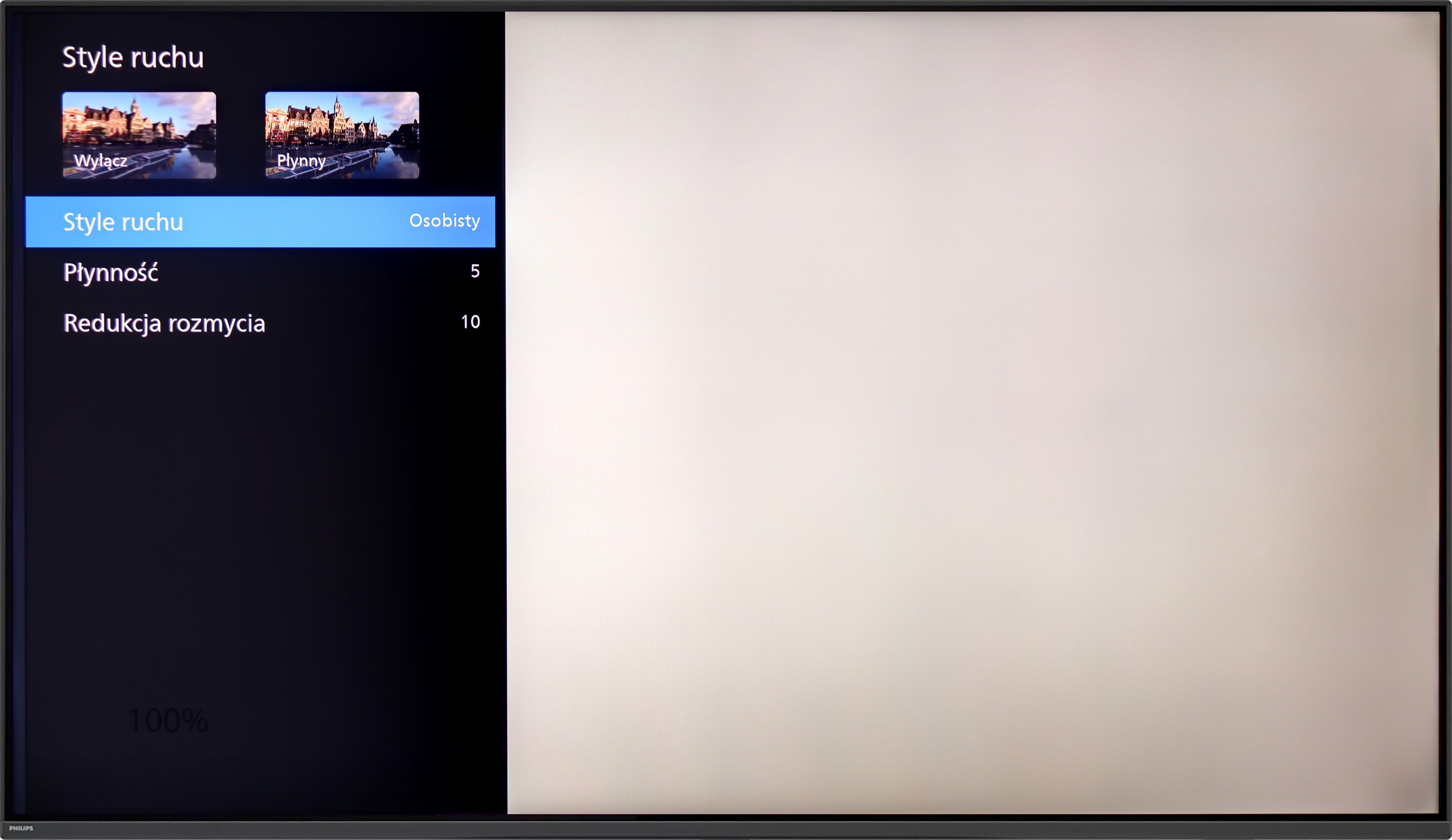
Blur (native resolution, maximum refresh rate):






The S90D television is equipped with a 120 Hz panel, with the ability to "overclock" to 144 Hz with the right PC configuration, providing exceptional motion smoothness. Samsung has been offering a variety of image clarity settings on a ten-point scale for years, allowing users to customise the display to their preferences. In the UFO test, thanks to the use of an OLED panel, there's no question of any ghosting. The response time of the pixels is instantaneous and perfectly captures dynamic movements. In this aspect, OLED technology is considered one of the best on the market. The picture is extremely sharp and detailed, even during fast action, making the S90D OLED 48 Samsung television the perfect choice for gamers and sports enthusiasts.
PHILIPS PUS9060 is equipped with a 4K panel featuring a 144 Hz refresh rate, so we can confidently say it’s suitable for both watching sports and gaming. And indeed it is. But what about movies, which are most often recorded at 24 frames? As with most of the TVs we’ve tested with a refresh rate of 120 Hz and above, the PUS9060 offers two sliders in the motion smoothness options. The “Smoothness” slider allows you to adjust the effect in films – you can set the picture to be smoother, resembling a theatrical effect (higher settings), or more cinematic, with a slight “judder” (lower settings). Additionally, there is a feature called "Motion Blur Reduction," which limits motion blur – and this is a very useful feature, especially when watching sports.
Console compatibility and gaming features
9.5/10
9.8/10
- ALLM
- VRR
- VRR range48 - 144Hz48 - 144Hz
- Dolby Vision Game Mode
- Correct implementation of HGIG
- 1080p@120Hz
- 1440p@120Hz
- 4K@120Hz
- Game bar

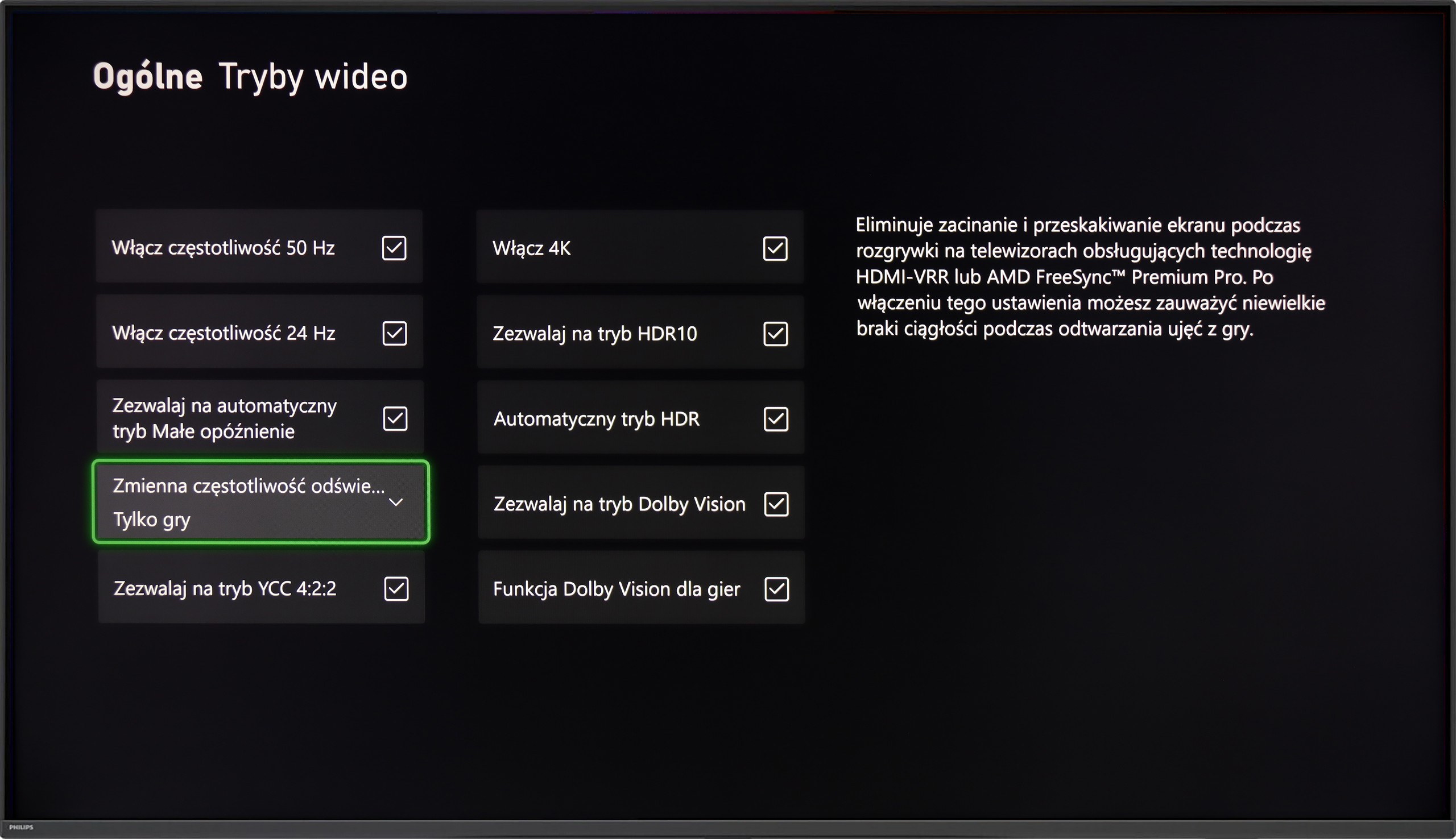



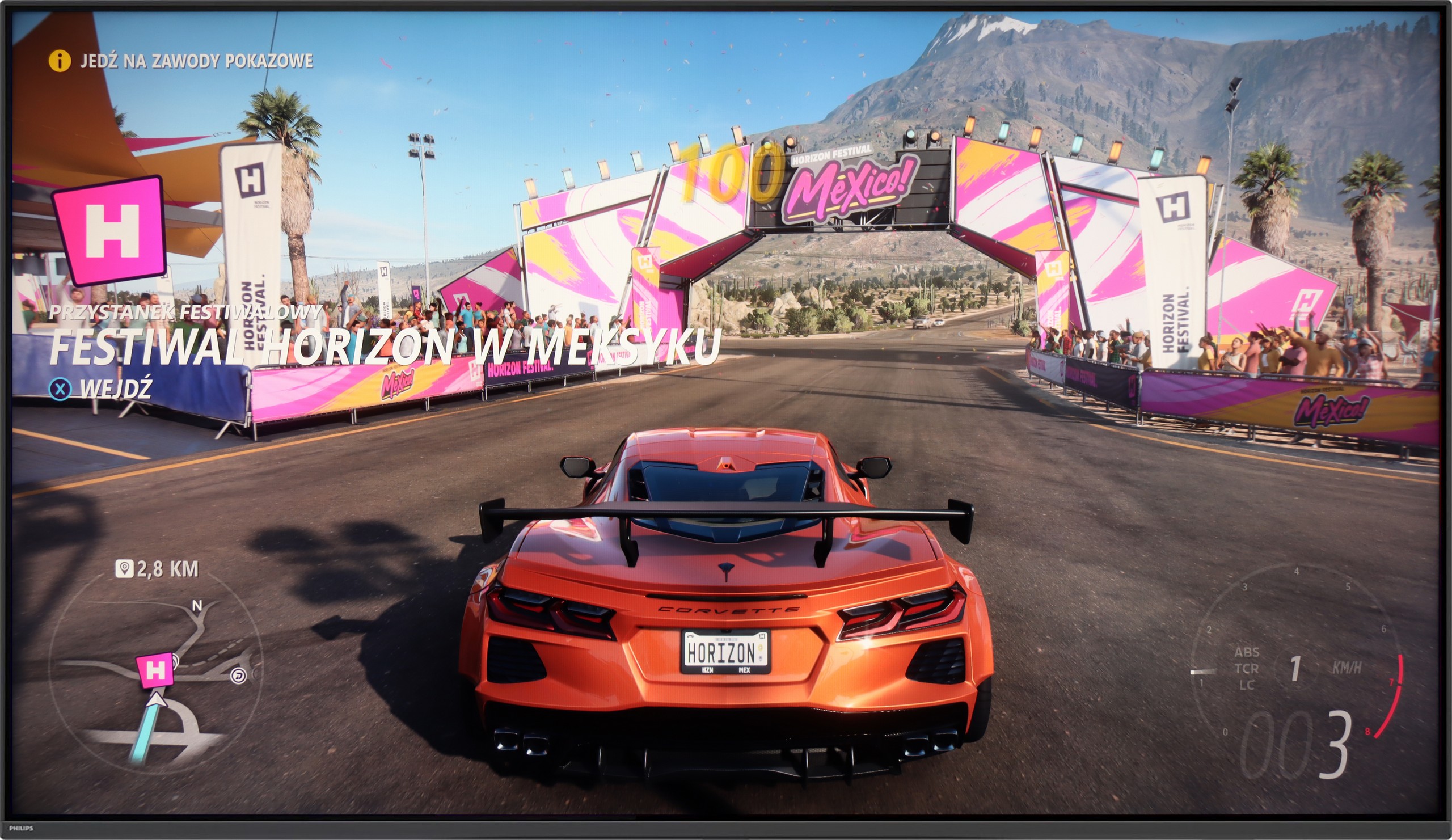

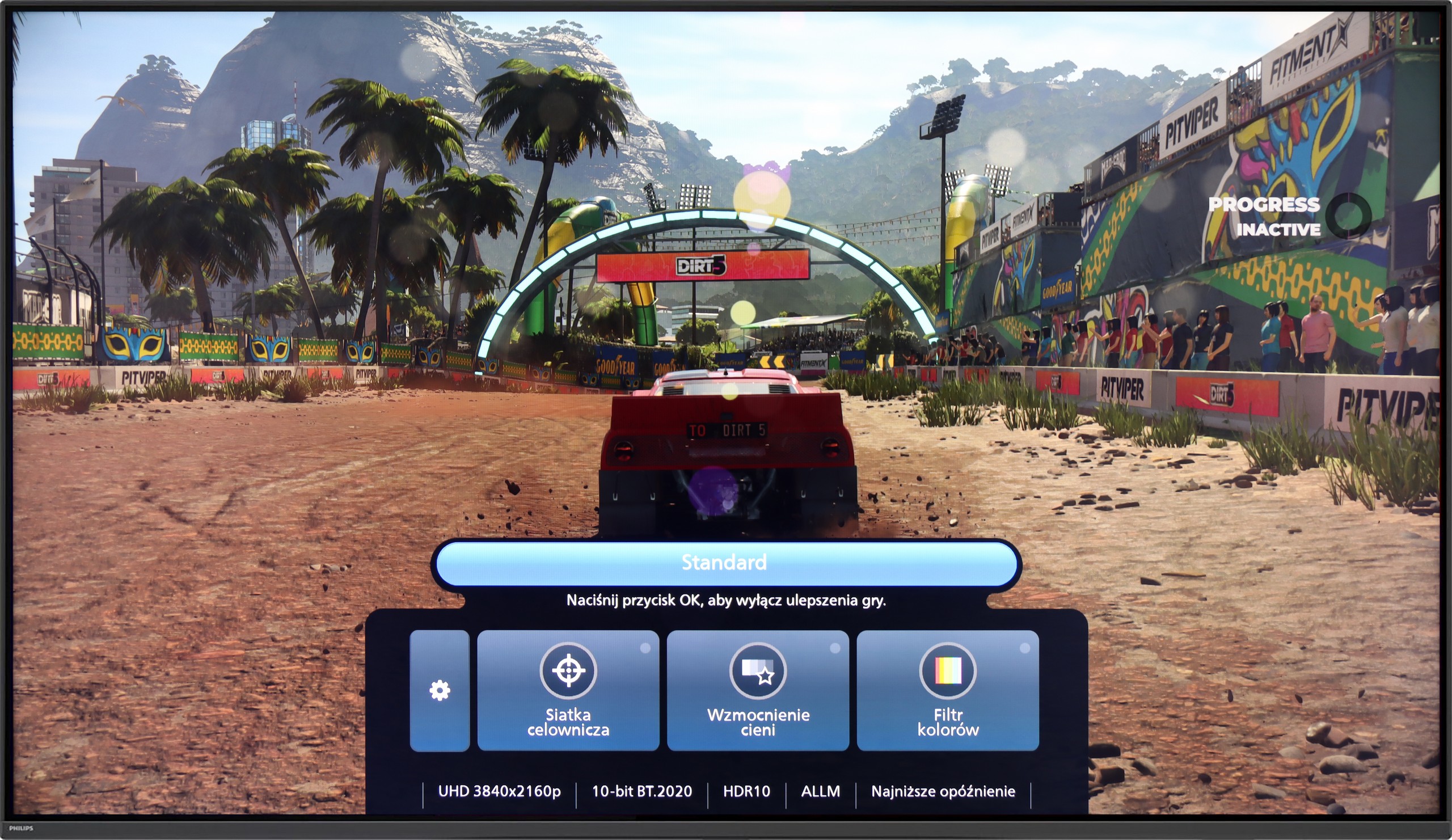
The Samsung OLED 48 S90D television is well-suited to the needs of gamers, offering four HDMI 2.1 ports that support features such as Auto Low Latency Mode (ALLM), Variable Refresh Rate (VRR), and HGIG (HDR Gaming Interest Group). With these technologies, gamers can enjoy smoother gameplay and faster on-screen response, significantly enhancing comfort during long gaming sessions. Additionally, the Game Bar feature allows for easy adjustment of settings, such as aspect ratios, which can be particularly useful in different types of games. For PC users, the television offers an impressive refresh rate of 144Hz, and Nvidia and AMD graphics cards support G-Sync and FreeSync, further improving image smoothness. Although the lack of Dolby Vision support may be a drawback, it's worth noting that in gaming, this technology is not as widely used as in films. Nevertheless, the S90D still offers excellent features for gamers, making it a great choice for those seeking high-quality visuals and advanced gaming technologies.
PHILIPS PUS9060 is a true gaming monster – it has practically everything you could expect from a modern gaming television. It features VRR, ALLM, and also includes HGiG implementation, which helps set up HDR in games as intended by the developers. The television supports every possible resolution at 120 Hz, including 1080p, 1440p, and full 4K – so regardless of whether you're playing on Xbox, PS5, or PC, everything works as it should. It also comes with a simple Game Bar, a special menu for gamers that allows you to quickly check if the ALLM mode is indeed working in low latency mode.
And of course – Ambilight TV. Let’s face it – without LEDs on the back, it’s not a true gaming rig. 😉 The multicoloured backlighting really adds to the atmosphere, especially in the evening. It may not appeal to everyone, but younger gamers will be thrilled – it just looks impressive.
Input lag
10/10
9.5/10
SDR
HDR
Dolby Vision
Samsung's OLED features an almost reference-level low input lag, regardless of resolution and refresh rate, in both SDR and HDR modes. Results around 10 ms are truly impressive and significantly enhance the gaming experience. Such a low input lag ensures immediate response to on-screen actions, which is crucial in fast-paced games where every millisecond counts. This allows users to enjoy smoothness and precision, making the S90D TV an excellent choice for those who prioritise gaming performance.
The One from 2025 performs very well in terms of responsiveness. Input lag at around 9 ms at a 120 Hz signal and 18 ms at 60 Hz are values that ensure a quick and smooth response to every movement of the controller. Playing even dynamic action titles or demanding e-sports games is fully comfortable. The situation is slightly worse with Dolby Vision – here, the lag increases to around 33 ms. This is still an acceptable level for most "casual" gamers, but more demanding users may notice a slight slowdown in response. Therefore, in our opinion, a better choice would be the classic HDR10 mode with HGiG active. In this model, it has been implemented correctly and not only avoids delays but also eliminates potential issues with brightness and detail reproduction that sometimes occur in Dolby Vision.
Compatibility with PC
8.6/10
8.8/10

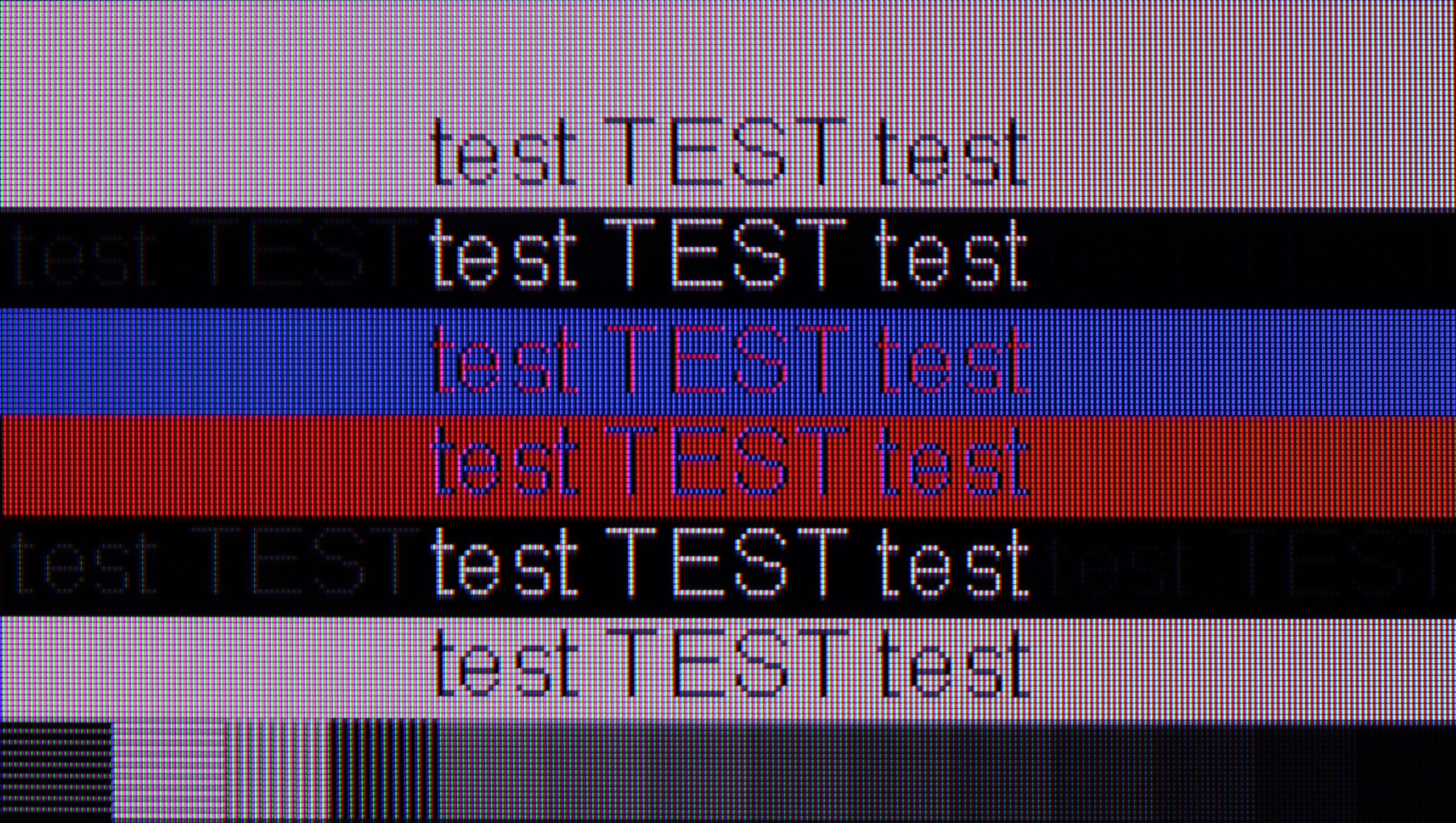
The Samsung OLED 48 S90D TV works perfectly with a PC. Fonts are clearly visible, making it easier to read text and use applications. Additionally, it supports chroma 4:4:4 at 4K resolution and a refresh rate of 144 Hz, ensuring full colour reproduction and image sharpness. It's worth noting that the input lag of just 5 ms is extremely advantageous, particularly for gamers and professionals working with graphics. With such low latencies, using the TV as a monitor becomes a pleasure, allowing for comfortable and responsive work. The S90D TV is an excellent choice for users seeking performance and quality in everyday computer use.
Using a computer on the PHILIPS PUS9060 should be pure pleasure. As mentioned earlier, the TV performs excellently for gaming on a console, but it also works well in conjunction with a computer. It offers 144 Hz refresh rate, G-Sync Compatible works correctly, and it has low input lag – making it easy to consider this model as a fully-fledged PC gaming monitor.
In terms of everyday work, it’s good as well. Chroma 4:4:4 has been implemented correctly, so fonts are clear and readable. We didn’t notice any issues with text sharpness, although on very dark backgrounds, you can see a slight dimming of letters with a bit of edge doubling. In practice, however, this shouldn’t bother anyone, even while working with text.
Viewing angles
7.2/10
3.4/10
The viewing angles on the S90D television, thanks to OLED technology, are unmatched. OLED offers excellent colour and contrast reproduction, even at wide viewing angles, making the picture remain sharp and vibrant from almost any perspective. Users can enjoy a consistent visual experience, regardless of where they are watching the screen.
The PUS9060 model is equipped with a VA panel, which – as is often the case – does not handle viewing angles very well. With a greater deviation from the axis, the screen brightness noticeably decreases and the colours lose their saturation. Unfortunately, this is a typical compromise compared to IPS panels, which offer better viewing angles but have significantly weaker contrast and blacks. Here, the situation is the opposite – blacks are good, but the angles are very average. Of course, with standard straight-on viewing, there are no issues, but in a larger lounge or with a bigger TV, where someone is sitting far to the side or we are looking at the edges of the screen, the differences will be noticeable.
TV efficiency during daytime
5.4/10
6/10

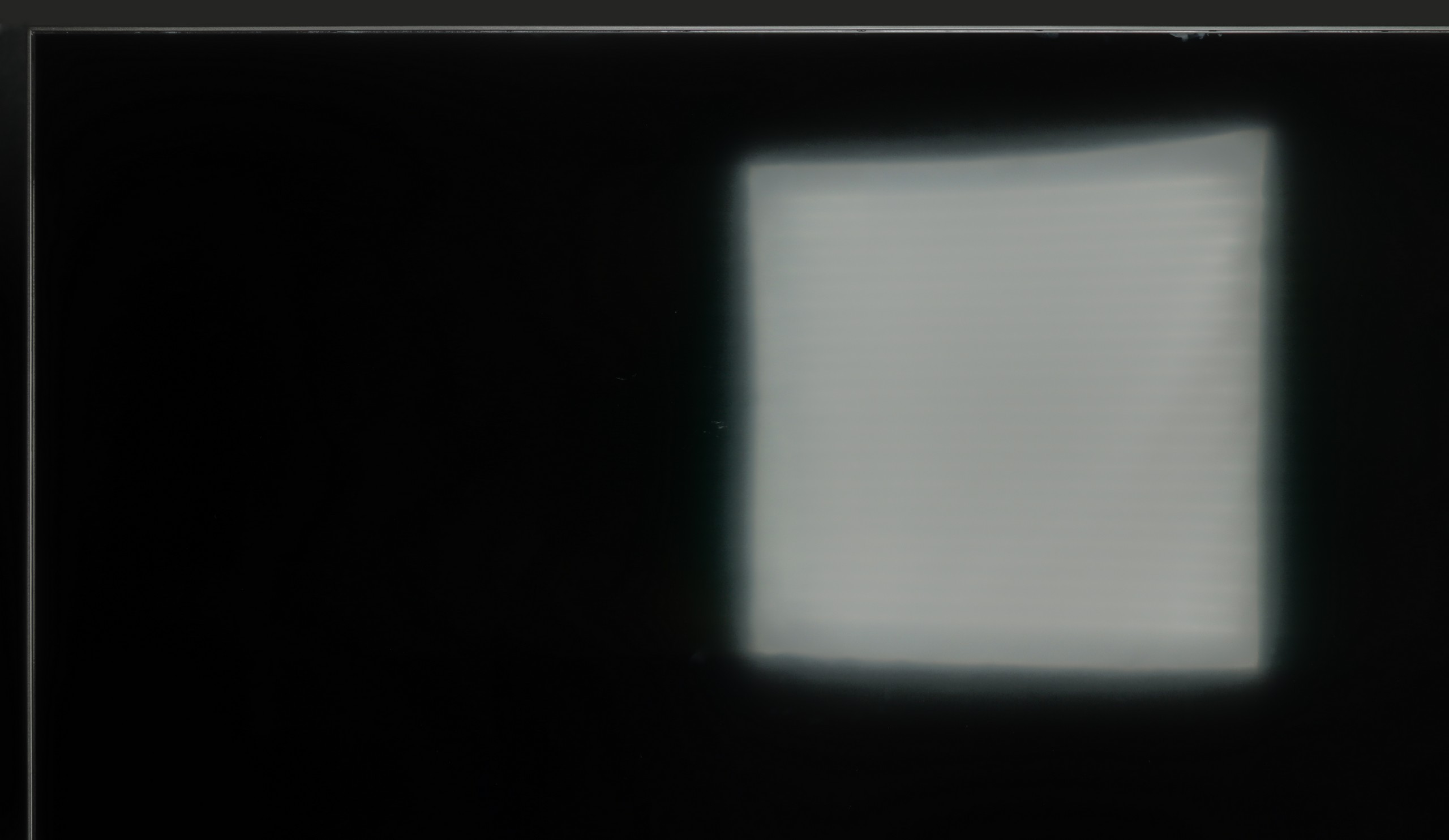


Matrix brightness
Average luminance SDR
PHILPS PUS9060: 495 cd/m2
Samsung S90D / S94D 48" (WRGB OLED): 320 cd/m2
While watching during the day, the Samsung OLED 48 S90D performs very well, achieving an average brightness of around 320 nits, which is a decent result for OLED technology in a 48-inch size. Thanks to the satin panel, reflection suppression is at a reasonable level, allowing for comfortable viewing even in bright rooms. The only noticeable downside of this technology, and not the television itself, is the brightness at 100% white screen fill. In such conditions, OLED may struggle to achieve extremely high brightness. Situations like this can be observed when we want to watch winter sports, e.g., ski jumping.
Philips PUS9060 performs quite well in a bright room. The satin finish of the screen effectively reduces reflections and glare, so watching in a lounge with numerous lamps or large windows shouldn't pose too many problems. It's also a plus that the blacks don't fade excessively and the picture still maintains decent contrast. The situation could be even better if the TV offered higher brightness. About 500 nits is a decent result, but in very challenging lighting conditions, it may prove insufficient.
Details about the matrix
Subpixel Structure:

Panel uniformity:


TV features
7.7/10
6.4/10
- HDMI inputs0 x HDMI 2.0, 4 x HDMI 2.1 48Gbps0 x HDMI 2.0, 4 x HDMI 2.1 48Gbps
- Other inputsToslink (Optical audio)
- OutputsToslink (Optical audio), eARC (HDMI), ARC (HDMI)Toslink (Optical audio), eARC (HDMI), ARC (HDMI), Mini-Jack (Headphones)
- Network InterfacesWi-Fi 2.4GHz, Wi-Fi 5GHz, Ethernet (LAN) 100MbpsWi-Fi 2.4GHz, Wi-Fi 5GHz, Ethernet (LAN) 100Mbps
- TV receptionDVB-T, DVB-T2, DVB-S, DVB-S2, DVB-CDVB-T, DVB-T2, DVB-S, DVB-S2, DVB-C
Classic features:
- Recording to USB (terrestrial TV)
- Recording programming
- Picture in Picture (PiP)
- RF remote control (no need to aim at the screen)
- Backlit remote control
- Teletext
- Audio only mode
- Possibility to connect Bluetooth headphones to the TV
- Possibility to simultaneously use Bluetooth headphones and the TV speaker
Smart features:
- AirPlay
- Screen mirroring (Windows Miracast)
- Wyszukiwanie głosowe
- Voice search in native language
- Ability to connect a keyboard and mouse


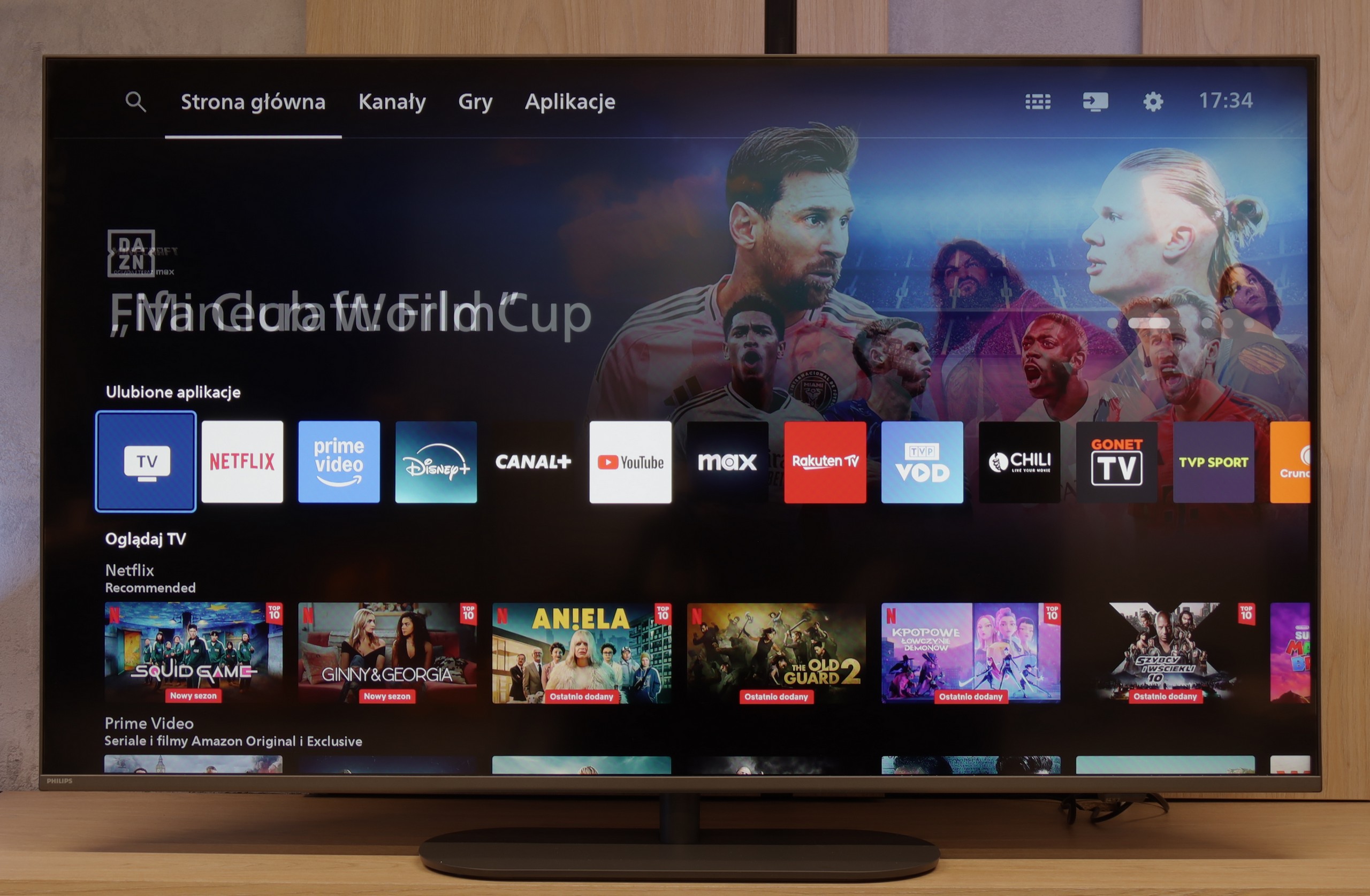
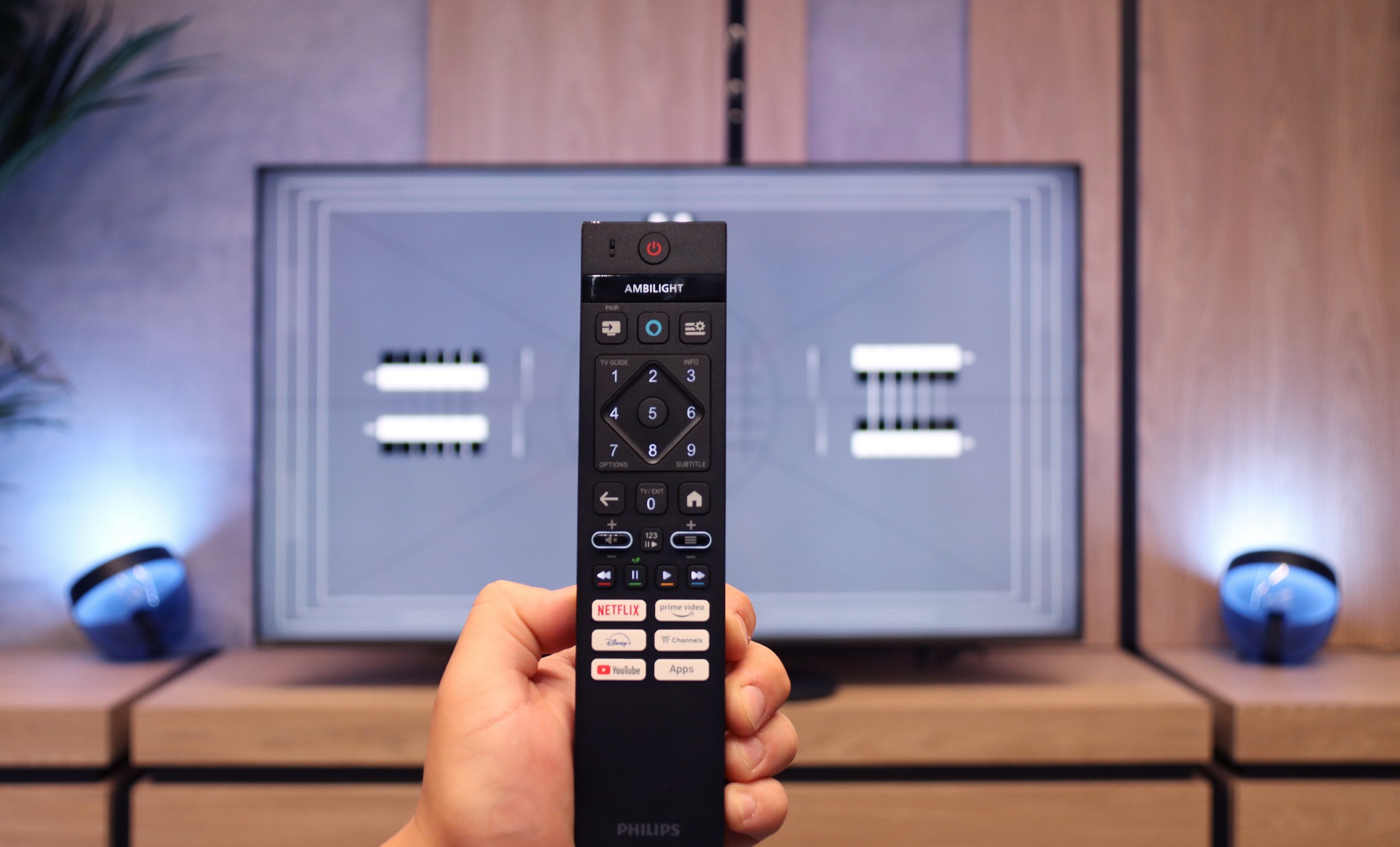

The Samsung OLED 48 S90D television offers a range of features that significantly enhance user comfort and make it the ideal device for entertainment in the comfort of your home. The Tizen system, which this model is based on, is a modern and advanced platform that provides users with an intuitive and smooth experience. Thanks to its user-friendly interface, navigation through apps and settings is quick and intuitive, making it easier for even those less familiar with technology to use the television. Tizen supports a rich set of applications, including all popular streaming services such as Netflix, YouTube, and Amazon Prime Video. A new feature for 2024 is also the availability of voice search in Polish. It's also worth noting the eco-friendly solar remote, which is not only environmentally friendly but also practical for everyday use. For example, the remote can control multiple devices connected to the television, so we don’t have to use multiple remotes. Additionally, the television supports AirPlay, enabling easy content streaming from Apple devices like the iPhone or iPad. The S90D OLED 48 also allows for the connection of various Bluetooth devices, such as mice, keyboards, or headphones, which increases its versatility and allows for personalised user experiences. As a result, users can easily adjust their settings to make the most of the television's capabilities. The only downside that can be pointed out is the lack of USB recording support. For some users, this may pose a limitation, especially in the case of wanting to archive their favourite shows or movies. Despite this, the S90D television offers many advanced features and technologies that make it an excellent choice for anyone looking for high-quality entertainment in their home.
Classic features of TheOne television:
When it comes to these "classic features," the PUS9060 is quite mediocre. Of course, it has all the basics; there's EPG, teletext, and the ability to connect headphones via Bluetooth. But unfortunately, it lacks USB recording functionality, and there's no PiP (picture in picture) mode, which is becoming less common but still comes in handy. On the plus side, it has a remote with a numeric keypad - modern, backlit, which visually makes a great impression. It's just a pity that it's still a classic infrared model, so to use it, you have to aim directly at the screen. A bit disappointing, as with such a modern look, it really called for Bluetooth (RF) control.
Smart TV:
Most Philips televisions from 2025 run on the Titan OS system, which debuted relatively recently - unfortunately, this still comes with some issues. The system itself operates quite smoothly - definitely better than in cheaper Philips models - and didn't give us any problems when using features like screen mirroring or AirPlay (which isn't a given even in 2025). The biggest downside of Titan OS is still its quite average access to applications (list below). On the plus side, we can bypass this by connecting a keyboard and mouse to the television and using the built-in browser, but it's not the most comfortable solution - rather makeshift.
Playing files from USB
8.9/10
7.9/10
Supported photo formats:
Maximum photo resolution:


The Samsung S90D comes equipped with a built-in player that supports most popular video formats, allowing for convenient playback of films from various sources. The player also supports subtitles in Polish and enables users to customise the font colour, enhancing comfort while watching content with subtitles. In terms of photo formats, the television handles many of them, however, one of the few downsides is the lack of ability to play the popular PNG format. Nonetheless, the overall file playback capabilities of the S90D are outstanding.
The built-in player in the PUS9060 played virtually all popular audio and video formats, so it's really hard to find anything to complain about here. Movies in popular containers, music or photos – everything worked without a hitch.
The only thing that might be a bit annoying is the limited number of supported subtitle formats and the randomly selected photo resolutions that the TV can read. But apart from that, most everyday users can easily manage without the need to connect a computer or console to display their files from a USB drive.
Apps
8.3/10
6.2/10














































Sound
6.8/10
6.6/10
- Subjective sound quality:6.8/106.6/10
- Dolby Digital Plus 7.1:
- Dolby True HD 7.1:
- Dolby Atmos in Dolby Digital Plus (JOC):
- Dolby Atmos in Dolby True HD:
- DTS:X in DTS-HD MA:
- DTS-HD Master Audio:
The Samsung OLED 48 S90D TV delivers good sound quality, with clear and balanced audio. The sound is crisp, and the bass is well-defined, enhancing the viewing experience. Even at maximum volume, the sound remains clear, although the TV itself isn't very loud.
The sound from the PHILIPS PUS9060 was generally pleasant, although it’s hard to call it exceptional. The tested unit had built-in audio in a 2.0 configuration with a total power of 40 W, which is more than enough for everyday viewing. Fortunately, the TV supports most popular audio formats, so if someone connects a soundbar or home theatre system, they can comfortably expect full support for Dolby Atmos or DTS – without any fuss or loss of quality. For true audio enthusiasts, this is definitely good news.


